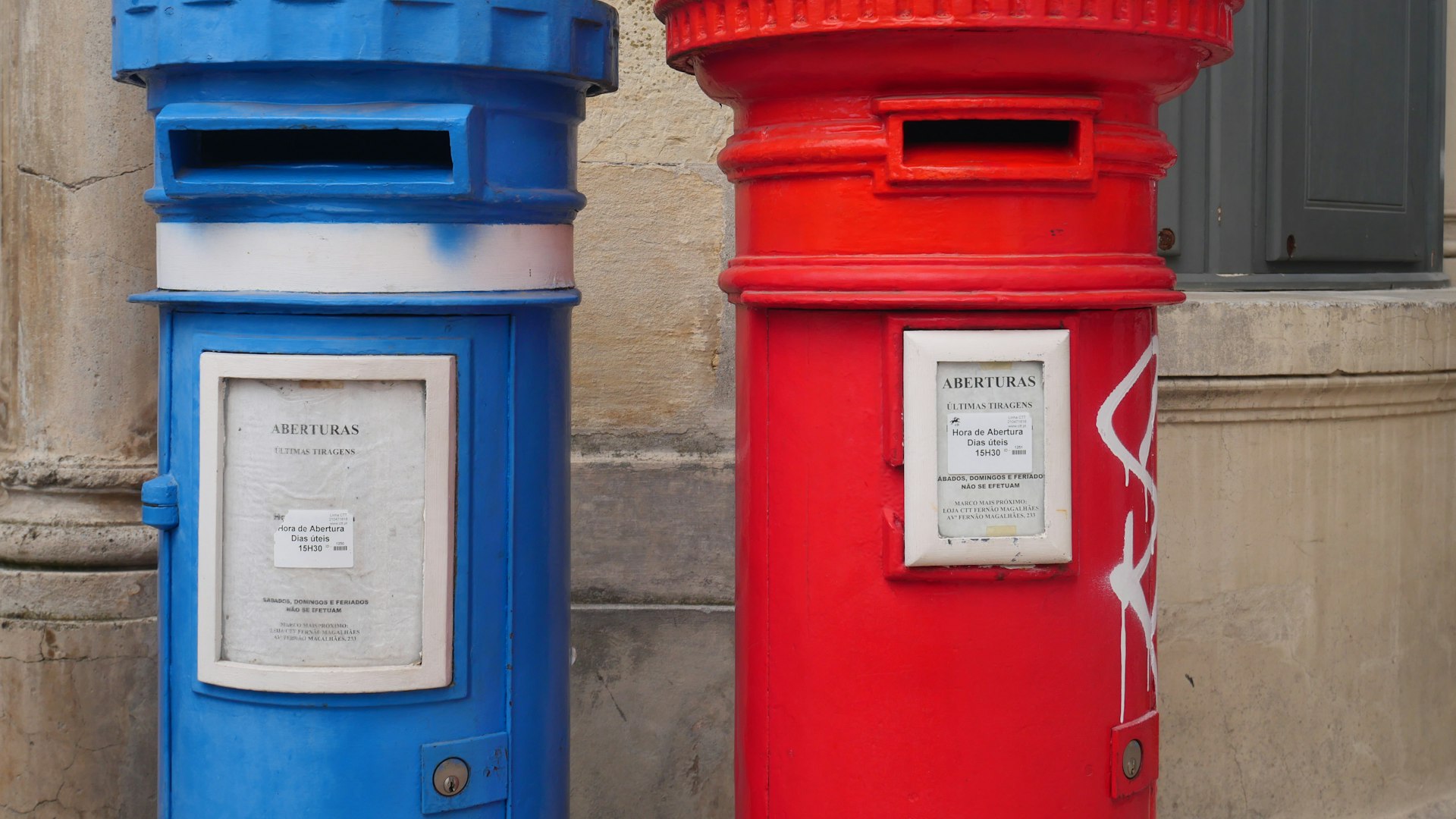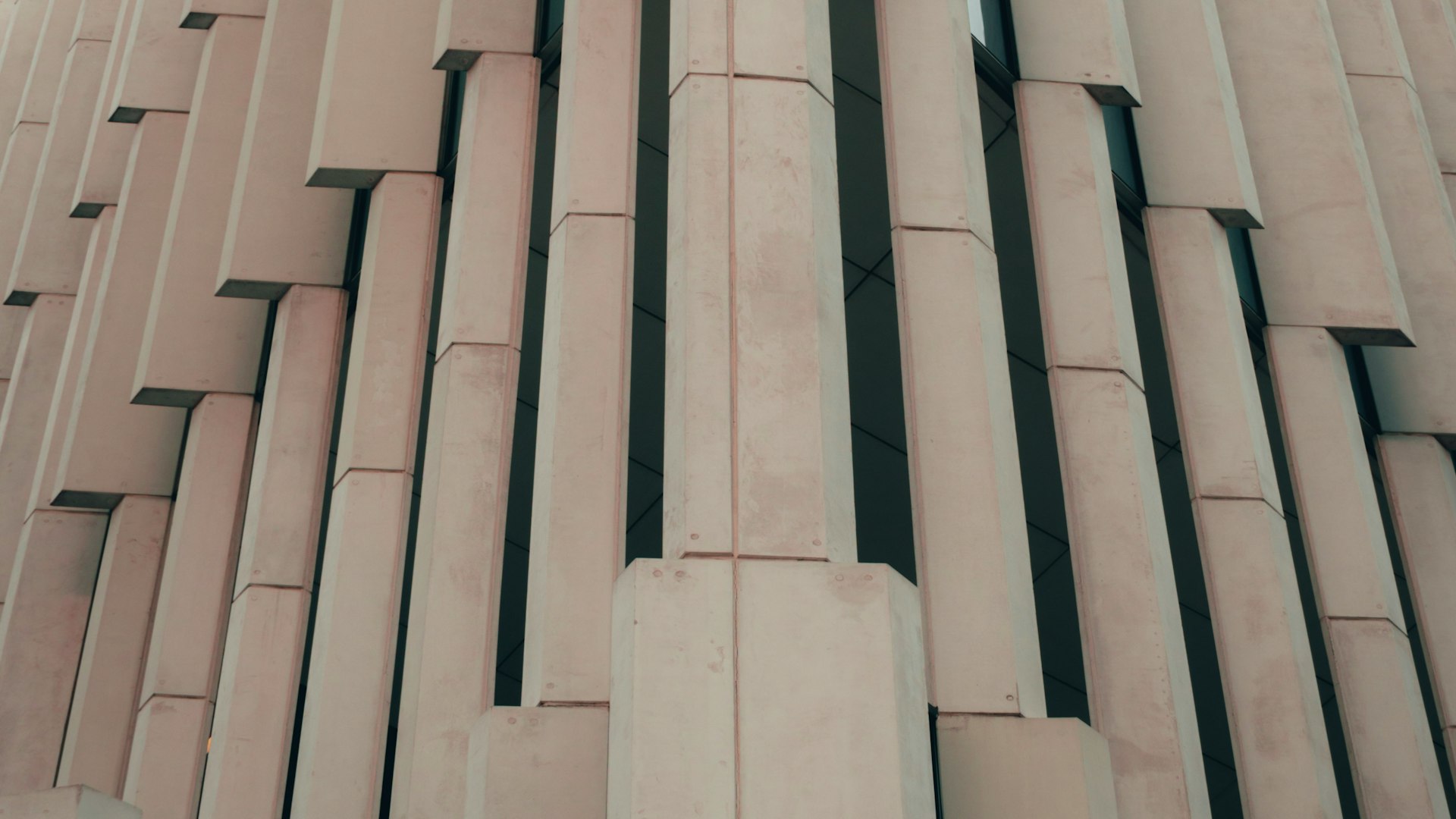Introduction to Modern Website Design The journey of website design has been a fascinating one, marked by a constant evolution that mirrors the rapid advancements in technology. From the rudimentary, text-heavy pages of the early internet to the visually stunning, interactive experiences we encounter today, website design has undergone a transformation that few industries can […]
The journey of website design has been a fascinating one, marked by a constant evolution that mirrors the rapid advancements in technology. From the rudimentary, text-heavy pages of the early internet to the visually stunning, interactive experiences we encounter today, website design has undergone a transformation that few industries can match. In the 1990s, the advent of HTML gave rise to the first generation of websites, which were largely functional without much consideration for aesthetics. Fast forward to the early 2000s, and we witnessed the birth of CSS and Flash, tools that introduced layout control and multimedia elements, respectively, paving the way for more sophisticated designs.
As we progressed into the 2010s, the focus shifted towards responsive design, a response to the explosion of mobile device usage. This era saw designers embracing fluid grids and flexible images to ensure websites looked good on any screen size. Today, modern website design is characterised by its emphasis on user experience (UX), mobile-first approach, and the use of advanced technologies like HTML5, CSS3, and JavaScript frameworks to create dynamic, engaging, and accessible websites.
Keeping abreast of design trends is not merely a matter of aesthetic preference; it’s a business imperative. A study by Adobe found that 38% of people will stop engaging with a website if the content or layout is unattractive. Moreover, with Google’s ever-evolving algorithm, a website’s design now directly impacts its search engine ranking. Modern website design trends often incorporate SEO-friendly elements, ensuring that a site not only captivates users but also performs well in search results.
The importance of staying current with design trends cannot be overstated. It’s about more than just looking contemporary; it’s about delivering a seamless user experience, reducing bounce rates, and maximising conversions. A well-designed website serves as a digital storefront, setting the tone for a company’s online presence and brand identity. In an age where the average human attention span has fallen to just 8 seconds, according to a Microsoft study, capturing and retaining user interest through compelling design is more crucial than ever.

| Decade | Design Characteristics | Technological Advancements |
|---|---|---|
| 1990s | Text-heavy, minimal graphics | HTML, table-based layouts |
| 2000s | Layout control, multimedia elements | CSS, Flash |
| 2010s | Responsive design, mobile-first approach | HTML5, CSS3 |
| 2020s | User experience focus, dynamic interactions | Advanced JavaScript frameworks |
Modern website design is not just about aesthetics; it’s a strategic framework that combines form and function to meet user needs while achieving business goals. At its core, modern design is user-centric, focusing on creating a seamless and engaging user experience. The characteristics of modern website design include simplicity, clean lines, and an uncluttered layout, which together contribute to a design that’s as functional as it is beautiful. This approach is supported by the use of bold typography, vibrant colours, and high-quality images that capture attention and convey messages more effectively.
Minimalism has become a cornerstone of modern website design, with the mantra ‘less is more’ being more relevant than ever. A study by Google has shown that visitors judge a website’s aesthetic quality within 1/50th to 1/20th of a second, and websites with simple designs are consistently rated as more visually appealing. Minimalism in web design means stripping away excess design elements and focusing on what is essential. This not only creates a cleaner and more inviting interface but also improves website performance by reducing load times, which is crucial given that 53% of mobile site visits are abandoned if pages take longer than 3 seconds to load, according to Google’s DoubleClick.
White space, or negative space, plays a pivotal role in modern website design. It’s the empty space between design elements, and it’s used strategically to improve readability and comprehension. By allowing the content to breathe, white space makes a website feel open, fresh, and modern. It also helps to guide users through the site’s content, directing their attention to key elements such as calls-to-action and value propositions. The effective use of white space can significantly enhance a user’s experience, with research indicating that proper use of white space between lines of paragraphs and its left and right margins can increase comprehension by almost 20%.

| Design Element | Traditional Design | Modern Design |
|---|---|---|
| Layout | Cluttered, with many competing elements | Clean, with focused content and ample white space |
| Typography | Small, difficult-to-read fonts | Bold, clear, and readable typography |
| Colour Palette | Often uses many colours without a clear hierarchy | Limited colour palette with strategic use of accent colours |
| Imagery | Generic stock photos and cluttered graphics | High-quality, relevant images and purposeful graphics |
| Navigation | Complex with many levels and options | Simplified, intuitive, and user-friendly |
When it comes to establishing an online presence, one of the first decisions a business owner must make is whether to opt for a custom website design or to utilise a template-based solution. Custom website design involves creating a unique web presence from scratch, tailored to the specific needs and branding of the business. This bespoke approach allows for a high degree of originality and differentiation in a crowded digital marketplace. According to a Stanford study, 75% of users admit to making judgements about a company’s credibility based on their website’s design, underscoring the importance of a distinctive and professional online appearance.
Custom designs are crafted with the business’s unique value proposition in mind, ensuring that every aspect of the site aligns with the brand’s identity. This can lead to a more coherent user experience and can significantly enhance brand recognition. Moreover, custom websites are often built with scalability in mind, allowing for future growth and the addition of features without the constraints imposed by pre-designed templates. This flexibility can be crucial for businesses that anticipate evolving their online services or offerings.
On the other hand, template-based designs offer a cost-effective and time-efficient alternative for businesses looking to launch their online presence swiftly. With a plethora of templates available, businesses can select a design that closely matches their vision, often with the option to customise certain elements such as colours and fonts. This route is particularly advantageous for startups and small businesses with limited budgets or for those who require a simple website without complex functionalities. A survey by W3Techs reveals that WordPress, a popular content management system known for its wide range of templates, powers 41.4% of all websites, indicating the popularity of template-based solutions.

| Aspect | Custom Website Design | Template-Based Design |
|---|---|---|
| Uniqueness | Highly unique, stands out from competitors | Less unique, potential similarity to other sites |
| Branding | Fully aligned with brand identity | Limited alignment, may require compromises |
| Scalability | Designed to grow with the business | May have limitations for future expansion |
| Functionality | Custom functionalities tailored to needs | Standard functionalities with some customisation options |
| Cost | Higher initial investment | Lower initial cost, cost-effective for small budgets |
| Time to Launch | Longer development time | Quick setup and launch |
Creative website design is a powerful tool in the digital landscape, capable of captivating users and forging memorable experiences. When I craft a website, my goal is to weave creativity into the fabric of the user interface, ensuring that each visitor’s journey is not only intuitive but also delightful. The strategic use of innovative design elements such as interactive infographics, engaging animations, and immersive video backgrounds can significantly enhance user engagement. For instance, incorporating micro-interactions that respond to user actions can create a sense of direct manipulation and increase the time spent on the site.
However, creativity must not overshadow usability. A website’s design should facilitate an effortless user journey, guiding visitors from their initial entry point to the desired action, be it making a purchase, signing up for a newsletter, or contacting the business. The Nielsen Norman Group highlights that users prefer websites that are easy to use and navigate, which can lead to higher customer satisfaction and repeat visits. Therefore, while I strive to push the boundaries of design, I also maintain a laser focus on usability principles, ensuring that the website remains accessible, intuitive, and user-friendly.
The balance between creativity and usability is a delicate dance, where both elements must coexist harmoniously. A website that is visually stunning but difficult to navigate can frustrate users, while a site that is highly usable but lacks aesthetic appeal may fail to make an impact. To strike the right balance, I employ user-centred design methodologies, conducting user testing and gathering feedback to refine and perfect the design. This iterative process ensures that the website not only looks great but also performs flawlessly, providing a seamless experience that resonates with the target audience.

| Creative Element | Impact on User Engagement | Consideration for Usability |
|---|---|---|
| Interactive Infographics | Increases understanding and retention of information | Ensure clarity and ease of interaction |
| Engaging Animations | Attracts attention and adds a dynamic feel to the site | Avoid overuse that can distract or slow down the site |
| Immersive Video Backgrounds | Creates an impactful visual narrative | Optimise for fast loading and consider bandwidth limitations |
| Micro-Interactions | Enhances the sense of direct manipulation and engagement | Keep interactions simple and intuitive |
In today’s fast-paced digital world, mobile friendly and responsive website design is not just a luxury; it’s an absolute necessity. As a content writer with a keen eye on SEO and user experience, I understand that the proliferation of smartphones and tablets has fundamentally shifted the way users access the internet. A report from Statista indicates that mobile devices (excluding tablets) generated 54.8% of global website traffic in the fourth quarter of 2021, a trend that has been on the rise for the past decade. This seismic shift means that a website must perform flawlessly across a myriad of screen sizes and devices to ensure a consistent and engaging user experience.
Responsive design is the answer to this challenge. It allows a website to automatically adjust its layout, content, and functionalities to accommodate different screen sizes, ensuring that users have a seamless experience whether they’re on a desktop, tablet, or smartphone. Google has long been advocating for mobile-first design, and in July 2019, it began mobile-first indexing for new websites, making responsive design a critical factor for SEO. Websites that are not mobile friendly risk being penalised in search rankings, making it harder for them to be discovered by potential customers.
The influence of mobile internet usage on design trends is undeniable. Designers are now prioritising mobile user interfaces, simplifying navigation menus, optimising images for faster loading times, and ensuring that touch controls are intuitive and accessible. The goal is to create a user experience that is as intuitive and satisfying on a small touchscreen as it is on a large desktop monitor. By embracing mobile friendly and responsive design, businesses can cater to the growing number of users who rely on their mobile devices for shopping, information, and services.

| Design Trend | Mobile Influence | SEO and User Experience Impact |
|---|---|---|
| Mobile-First Design | Designing with mobile users as the primary audience | Improved search rankings and user engagement |
| Simplified Navigation | Adapting menus for touch interfaces and smaller screens | Enhanced usability and reduced bounce rates |
| Optimised Images | Ensuring fast loading times on mobile data connections | Faster page speeds and better user retention |
| Intuitive Touch Controls | Designing for touch rather than mouse clicks | Increased accessibility and improved mobile experience |
Ecommerce website design is a critical factor that can make or break an online store’s success. In my experience, the key features of successful ecommerce website designs revolve around functionality, aesthetics, and the overall shopping experience. A well-designed ecommerce site should be visually appealing to draw customers in, but it’s the user experience that keeps them browsing and ultimately leads to conversions. For instance, a study by Baymard Institute suggests that an optimized checkout design can increase conversion rates by 35.26%. This highlights the importance of a streamlined and user-friendly checkout process in ecommerce design.
User-friendly navigation is paramount for online stores. Customers should be able to find products quickly and easily, with intuitive categorisation and a robust search function. A cluttered or confusing navigation structure can lead to frustration and cart abandonment. In fact, according to a report from Nielsen Norman Group, 77% of online shoppers say that ease of use is the most important characteristic of a website. Therefore, ensuring that your ecommerce site is easy to navigate is not just a design consideration; it’s a business necessity.
Other essential features include high-quality product images, detailed product descriptions, and customer reviews, all of which help to build trust and confidence in the brand. Additionally, mobile responsiveness is crucial, as more consumers are using their smartphones to shop online. A seamless mobile shopping experience can significantly enhance customer satisfaction and loyalty. With these considerations in mind, an ecommerce website can be a powerful tool to drive sales and grow a business.

| Feature | Description | Impact on User Experience |
|---|---|---|
| Streamlined Checkout | Simple, efficient process with minimal steps | Reduces cart abandonment and increases conversions |
| Intuitive Navigation | Easy-to-use menus and search functionality | Enhances product discoverability and user satisfaction |
| High-Quality Images | Clear, zoomable images that showcase products | Builds trust and aids in the purchasing decision |
| Detailed Descriptions | Comprehensive information about product features | Provides clarity and reduces the likelihood of returns |
| Customer Reviews | User-generated feedback on products | Increases credibility and influences buying behaviour |
| Mobile Responsiveness | Optimised for shopping on smartphones and tablets | Accommodates the growing trend of mobile commerce |
As an experienced content writer, I’ve seen firsthand the symbiotic relationship between website design and SEO. A well-designed website is not just about aesthetics; it’s structured to be discoverable by search engines, which in turn helps to attract more organic traffic. The design choices we make, from the site’s architecture to its coding, can significantly impact its SEO performance. For instance, Google’s algorithm favours websites that load quickly, which means that efficient code and optimised images are crucial for SEO. Moreover, a study by Backlinko found that the first result in Google’s organic search results has an average click-through rate of 31.7%, highlighting the importance of ranking highly in search results.
Integrating SEO into the design process begins with understanding the fundamentals of how search engines work. This includes creating a clear hierarchy through proper use of HTML tags, ensuring that content is easily crawlable, and implementing a responsive design that caters to mobile users. Additionally, incorporating SEO-friendly URLs, accurate meta tags, and descriptive alt text for images can further enhance a website’s visibility. It’s also essential to consider the user experience, as search engines now use metrics like dwell time and bounce rate to gauge a site’s relevance and quality.
To create an SEO friendly website design, it’s important to collaborate closely with SEO specialists from the outset. This collaboration ensures that SEO best practices are woven into the design, rather than being an afterthought. By prioritising SEO during the design phase, businesses can build a solid foundation for their online presence, making it easier to implement ongoing SEO strategies and adapt to changes in search engine algorithms.

| SEO Element | Description | Impact on SEO |
|---|---|---|
| Site Architecture | Logical structure and easy navigation | Facilitates search engine crawling and indexing |
| Responsive Design | Adaptable to all devices and screen sizes | Improves mobile search rankings and user experience |
| Optimised Images | Compressed images with descriptive alt text | Enhances page load speed and provides context for search engines |
| SEO-Friendly URLs | Clear and descriptive URLs | Improves user understanding and search engine relevance |
| Meta Tags | Accurate title tags and meta descriptions | Increases click-through rate from search engine results pages |
| Content Hierarchy | Use of header tags to define content structure | Helps search engines understand content priority |
Selecting the right website design agency or company is a pivotal decision that can have long-lasting implications for your business’s online success. As someone who has navigated the digital terrain extensively, I can attest to the importance of partnering with a design service that aligns with your vision and objectives. The criteria for selecting a website design agency should be meticulous and well-considered. It’s not just about their creative flair; it’s also about their technical expertise, industry experience, and ability to deliver a user-centric website that drives business growth.
A key indicator of a design agency’s capabilities is their website design portfolio. This collection of past work provides tangible evidence of their design style, versatility, and attention to detail. It’s essential to look beyond the aesthetics and evaluate how the websites perform in terms of speed, responsiveness, and SEO. According to a survey by Clutch, 83% of businesses believe their digital presence is important or very important to their company’s success, which underscores the value of a well-crafted website.
When reviewing a website design portfolio, consider the diversity of industries the agency has worked with and the range of project sizes. This can give you insight into their adaptability and experience in tackling various design challenges. Additionally, client testimonials and case studies can shed light on the agency’s process, communication, and ability to deliver results. Ultimately, the right website design service should not only have a proven track record but also share your commitment to excellence and innovation.

| Criteria | Description | Why It Matters |
|---|---|---|
| Technical Expertise | Proficiency in modern web technologies and best practices | Ensures the website is built to current standards and is future-proof |
| Design Versatility | Ability to create a range of design styles and adapt to brand needs | Reflects the agency’s ability to tailor the design to your unique brand identity |
| Industry Experience | Experience working with similar businesses or industries | Indicates an understanding of industry-specific challenges and user expectations |
| Performance Metrics | Portfolio sites with strong performance in speed, SEO, and responsiveness | Highlights the agency’s focus on creating websites that perform well and rank high |
| Client Testimonials | Feedback from previous clients regarding their experience | Provides insight into the agency’s reliability, communication, and customer service |
| Case Studies | Detailed accounts of the agency’s process and results achieved | Demonstrates the agency’s strategic approach and ability to deliver measurable outcomes |
For small businesses, the digital landscape offers a plethora of opportunities to establish a strong online presence without breaking the bank. Budget-friendly design options are abundant, allowing small enterprises to craft a professional-looking website that aligns with their brand and meets their customers’ needs. One of the most cost-effective solutions is to utilise website builders that offer a range of templates which can be customised to a certain extent. These platforms often provide a user-friendly interface, with drag-and-drop functionalities that eliminate the need for extensive coding knowledge.
However, it’s crucial to understand that investing in quality website design from the outset can yield significant long-term benefits. A well-designed website can enhance user experience, strengthen brand identity, and improve conversion rates. According to research by Blue Corona, 48% of people cited a website’s design as the number one factor in deciding the credibility of a business. Therefore, even with a modest budget, small businesses should prioritise a clean, intuitive, and responsive design that reflects their professionalism and attention to customer needs.
While affordability is a key consideration, it’s important not to compromise on the essential elements that make a website effective. This includes mobile responsiveness, fast loading times, and SEO optimisation. These factors are not only important for user experience but also for being found online. Investing in a quality website design is an investment in the business’s future, as it lays the foundation for digital marketing efforts and online growth.

| Consideration | Description | Long-Term Benefit |
|---|---|---|
| Professional Appearance | A clean and modern design that aligns with the brand | Enhances credibility and customer trust |
| User Experience | Intuitive navigation and fast loading times | Increases user satisfaction and likelihood of conversion |
| Mobile Responsiveness | A design that adapts to various screen sizes | Accommodates the growing number of mobile users |
| SEO Optimisation | Incorporation of SEO best practices | Improves online visibility and organic traffic |
| Scalability | The ability to expand and add features as the business grows | Supports long-term growth without the need for a complete redesign |
In conclusion, the journey through modern website design trends underscores the critical role that design plays in the digital success of a business. Embracing modern design principles such as responsiveness, user-friendliness, and SEO optimisation is not just about keeping up with the times; it’s about setting a business up for future growth. The statistics speak for themselves: a well-designed website can increase customer satisfaction, enhance brand perception, and drive conversions. For instance, according to a report by Toptal, companies with strong design outperform companies with weak design by 219% on the S&P Index (a stock market index) over the span of 10 years.
As we’ve explored, whether it’s through a custom website design that offers uniqueness and scalability, or a template-based design that provides cost-effectiveness and speed, the goal remains the same—to create a compelling online presence that resonates with the target audience. For businesses looking to thrive in an increasingly competitive online space, investing in professional website design services is a wise decision. These services bring expertise, experience, and a nuanced understanding of how to translate business objectives into a digital format that engages and converts.
I encourage business owners to view their website not just as a platform for information, but as a dynamic tool for growth. By partnering with the right website design agency or company, businesses can craft a digital experience that captivates, communicates, and converts. This investment in quality website design is an investment in the business’s future, laying the groundwork for sustained success in the online realm.
